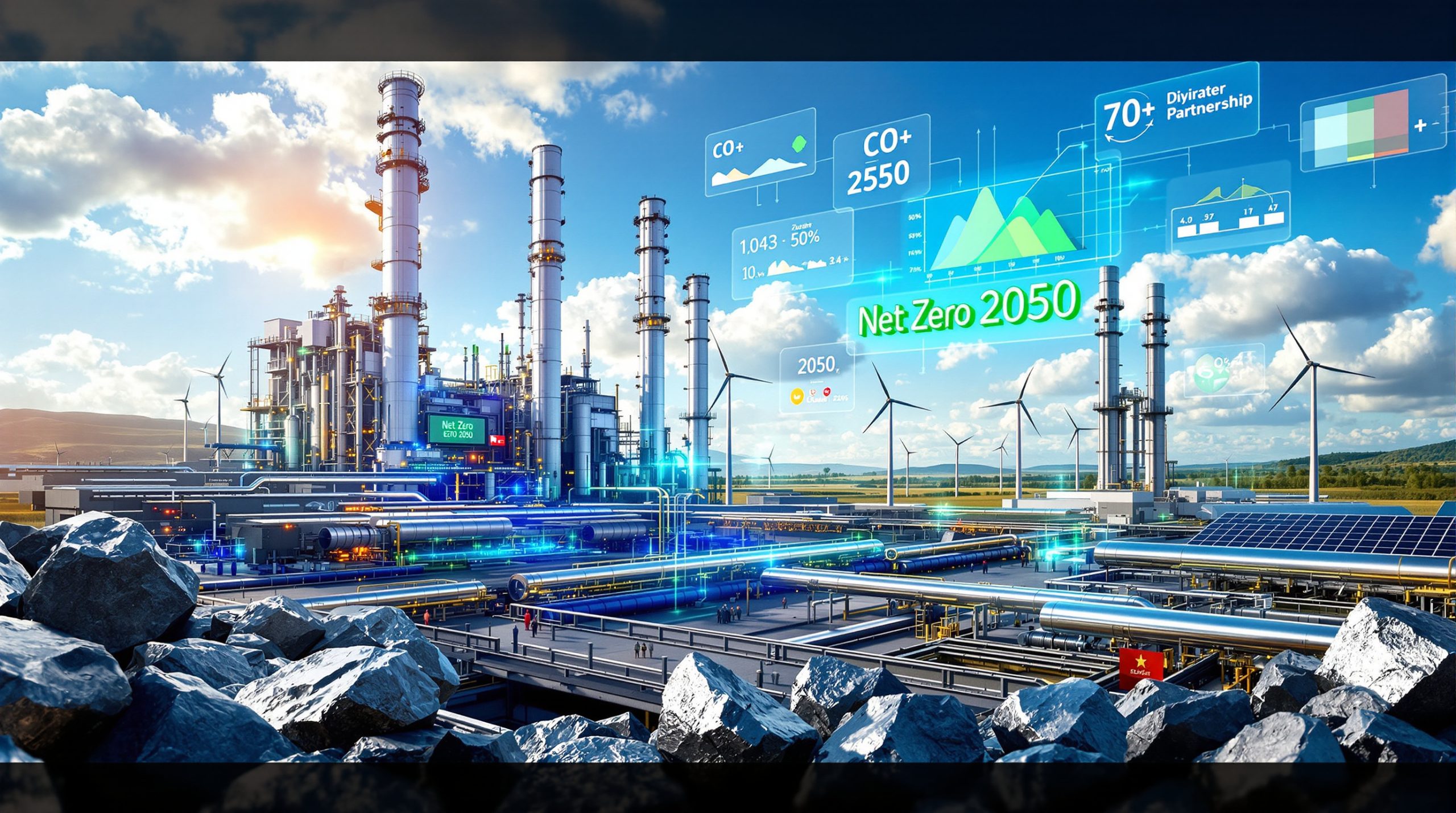How Is the Copper Market Evolving in 2025?
The copper market in 2025 continues to demonstrate strong fundamentals despite experiencing notable short-term volatility. Recent policy changes, particularly the United States' announcement of a 50% tariff on copper imports set to take effect August 1, 2025, have created temporary market disruptions that rippled through global supply chains.
In immediate response to this policy shift, US Comex copper futures reached an all-time high, reflecting market concerns about domestic supply constraints. However, as Mark Bristow, CEO of Barrick Mining Corp notes, these fluctuations don't alter copper's fundamental trajectory.
"The copper price is going to be unstable… but despite the fallout from US tariff policy decisions, copper's long-term trajectory remained unchanged," states Bristow, pointing to structural supply shortages that continue to underpin the market.
Industry analysts predict potential price pressure outside the US as major producers like Chile redirect supplies to more favorable markets. This redirection could create a notable price divergence between US domestic prices and international benchmarks.
Current Market Dynamics
- US tariff announcement created immediate price spikes across futures markets
- Supply chain reconfiguration is underway as producers evaluate optimal export destinations
- Market volatility is expected to continue amid global economic policy uncertainty
- Copper inventories at major exchanges remain at historically low levels, providing price support
- Price premiums in the US market may emerge as imported material becomes subject to tariffs
Despite these short-term disruptions, copper's fundamental supply-demand imbalance remains intact, with growing industrial applications and energy transition needs continuing to drive long-term demand projections.
Why Is Copper Demand Expected to Outpace Supply?
The fundamental imbalance between copper supply and demand continues to strengthen the metal's long-term outlook. Multiple intersecting factors are contributing to this dynamic, creating what industry experts increasingly refer to as a "structural deficit" in the copper market.
Technological Transformation Driving Demand
- Data Center Expansion: The explosive growth of AI and cloud computing is driving unprecedented demand for copper in data centers. A typical hyperscale facility requires 500-1,000 metric tons of copper for electrical infrastructure.
- Energy Transition: Renewable energy infrastructure requires 4-5 times more copper than traditional power systems. A single offshore wind turbine can contain up to 30 tons of copper.
- Electric Vehicle Production: Each EV uses approximately 83 kg of copper compared to 23 kg in conventional vehicles. With global EV sales projected to reach 35% of total vehicle sales by 2030, this represents a significant copper demand driver.
- Industrial Automation: Smart manufacturing systems require extensive copper-based wiring and components, with the average factory automation upgrade requiring 200% more copper wiring than traditional setups.
The convergence of these demand factors is creating unprecedented pressure on global copper supply chains, with consumption growth rates outpacing production expansion. This surging copper demand is driving significant investment interest in the sector.
Supply Constraints Creating Market Tightness
The supply side of the copper equation faces multiple challenges that limit the industry's ability to rapidly increase production:
- Most copper producers are focused on marginal expansions of existing operations rather than major new projects, limiting supply growth potential
- Development timelines for new copper mines typically span 7-10 years from discovery to production, creating a significant lag in supply response
- Environmental permitting challenges are extending project timelines in many jurisdictions, with some major projects facing decades of delays
- Grade decline in existing operations is reducing output from established mines, requiring more ore processing to maintain production levels
As Barrick's CEO notes, "Everyone is in agreement that copper demand is outgrowing the supply side," highlighting the industry consensus around this fundamental imbalance.
What Are Major Mining Companies Doing to Address the Copper Opportunity?
Leading mining companies are strategically positioning themselves to capitalize on copper's positive long-term trajectory through targeted investments and expansions, recognizing the metal's crucial role in global decarbonization efforts.
Strategic Expansion Projects
- Barrick Mining Corp: Implementing a $2 billion plan to double annual output at its Lumwana copper mine in Zambia to 240,000 metric tons by 2028
- Barrick's Long-Term Vision: Extending Lumwana's operational life to 2057, demonstrating confidence in copper's sustained demand trajectory
- Industry-Wide Approach: Most producers focusing on brownfield expansions rather than greenfield developments due to lower capital requirements and faster time to production
- Production Timeline Gaps: New major projects typically take 7-10 years to reach production, creating medium-term supply constraints that support price fundamentals
This strategic focus on existing assets reflects the mining industry's cautious approach to capital allocation in the wake of previous commodity cycles, with companies prioritizing disciplined growth over speculative expansion.
Investment Rationale
"We are very excited that we made this commitment to invest ahead of this tightening," Bristow explained, highlighting Barrick's forward-looking approach to the copper market.
Mining companies are increasingly allocating capital based on several key considerations:
- Forward-looking miners investing ahead of anticipated market tightening to position for premium pricing
- Strategic positioning to benefit from projected price strength during periods of maximum supply constraints
- Focus on jurisdictions with stable mining frameworks and existing infrastructure to minimize development risks
- Emphasis on projects with potential for operational longevity to maximize returns throughout commodity cycles
These investment decisions reflect a growing industry consensus around copper's central role in the global energy transition and technological transformation. Additionally, some companies are exploring the potential synergies in copper-uranium investment opportunities in key mining jurisdictions.
How Will Geopolitical Factors Impact Copper Markets?
The copper market is increasingly influenced by geopolitical considerations as countries recognize its strategic importance to economic and technological development, leading to more interventionist policy approaches.
Trade Policy Implications
The US 50% tariff on copper imports represents a significant shift in trade policy with far-reaching implications:
- The tariff aims to promote domestic copper industry development and reduce reliance on imported materials
- Potential for supply chain reconfiguration as producers redirect exports away from the US market
- Possible price divergence between US and global markets, with US consumers potentially facing premium pricing
- Risk of retaliatory measures from affected exporting nations, particularly Chile and Peru, which account for approximately 40% of global copper production
These trade tensions highlight the growing strategic importance of copper in national economic policy, moving beyond traditional market considerations. For a comprehensive understanding of how these policies may affect domestic production, the US copper production overview provides valuable insights.
Strategic Resource Considerations
Beyond specific tariff measures, broader geopolitical factors are reshaping the copper landscape:
- Growing recognition of copper as a critical mineral for national security and technological competitiveness
- Increased government interest in supporting domestic production through permitting reforms and financial incentives
- Potential for strategic stockpiling by major consuming nations seeking to insulate against supply disruptions
- Rising importance of supply chain security and diversification, particularly for manufacturing sectors dependent on copper inputs
As one mining industry executive noted, "Copper has transitioned from a commodity to a strategic resource," reflecting its elevated importance in national industrial policy.
What Are the Long-Term Price Projections for Copper?
While short-term volatility is expected, the structural fundamentals point to sustained strength in copper prices over the long term, with market dynamics supporting higher average price levels compared to historical norms.
Price Support Factors
Several fundamental factors underpin copper's long-term price outlook:
- Persistent gap between supply growth (1-2% annually) and demand expansion (3-4% annually)
- Capital intensity of new projects requiring higher sustained prices to justify investment
- Declining ore grades increasing production costs across the industry
- Growing recognition of copper's critical role in the energy transition creating sustained demand pressure
These factors combine to create what analysts describe as a "higher floor" for copper prices, even accounting for periodic cyclical downturns. Recent copper price predictions from industry experts further reinforce this positive outlook.
Market Expert Perspectives
Industry leaders maintain a bullish long-term outlook despite acknowledging near-term volatility:
- Industry leaders like Barrick CEO Mark Bristow remain optimistic despite short-term market fluctuations
- Consensus view that copper demand will outgrow supply capabilities over the coming decade
- Recognition that current price levels are needed to incentivize new production
- Expectations for continued investment in the sector despite near-term uncertainties
This balanced perspective acknowledges both cyclical challenges and structural opportunities, providing investors with a framework for evaluating copper market dynamics.
How Is Africa Positioning in the Global Copper Market?
African copper-producing nations are working to capitalize on growing global demand through expanded production and value-addition initiatives, with several countries implementing policy reforms to attract investment.
Zambia's Copper Renaissance
Zambia, Africa's second-largest copper producer, is experiencing renewed investor interest following policy reforms:
- Strategic focus on revitalizing the copper sector through policy reforms designed to improve fiscal stability
- Barrick's $2 billion investment in Lumwana demonstrates renewed investor confidence in the country's mining framework
- Potential to extend mine life to 2057, providing long-term economic benefits and planning stability
- Opportunity to increase annual production to 240,000 metric tons by 2028, significantly boosting the country's export earnings
These developments mark a significant turnaround for Zambia's mining sector, which had previously experienced investment hesitancy due to policy uncertainty.
Regional Development Implications
The expansion of African copper production carries broader economic implications:
- Copper sector growth creating employment and economic diversification opportunities beyond direct mining operations
- Infrastructure development supporting broader economic activity, including power generation and transportation networks
- Technology transfer enhancing local technical capabilities and workforce development
- Potential for downstream processing to capture additional value through refining and semi-fabrication activities
These benefits extend beyond direct mining revenues, creating wider economic development opportunities across copper-producing regions. Meanwhile, in South America, Argentinian copper projects are also advancing rapidly, diversifying the global supply landscape.
What Should Investors Consider About Copper's Long-Term Trajectory?
Investors evaluating the copper sector should consider both short-term volatility factors and long-term structural trends, balancing cyclical risks against secular growth opportunities.
Investment Considerations
- Supply-Demand Fundamentals: Persistent gap between production growth and consumption, with limited major new projects in the development pipeline
- Project Pipeline: Limited major new developments coming online in the next 5 years, creating a potential supply crunch in the mid-to-late 2020s
- Production Costs: Rising expenses due to declining grades and increasing regulatory requirements, supporting higher average prices
- Strategic Importance: Growing recognition of copper's critical role in energy transition and technology applications, enhancing its policy priority
These factors create what industry analysts describe as an "asymmetric upside" for copper investments, with the potential for significant price appreciation during periods of maximum supply constraint.
Risk Factors
While the long-term trajectory remains positive, several risk factors warrant consideration:
- Short-term price volatility due to macroeconomic conditions and policy changes, potentially creating interim drawdowns
- Potential for substitution in some applications if prices remain elevated, particularly in consumer electronics and construction applications
- Project execution challenges including permitting delays and capital cost inflation affecting development timelines
- Geopolitical tensions affecting trade flows and market access, potentially disrupting established supply chains
A balanced investment approach acknowledges both the structural opportunities and cyclical risks, positioning for long-term exposure while managing near-term volatility.
FAQs About Copper's Long-Term Trajectory
How much copper is needed for the global energy transition?
The global energy transition is expected to require more than 50 million metric tons of additional copper by 2035. This includes requirements for renewable energy infrastructure, electric vehicles, charging networks, and grid modernization. Current global annual production is approximately 21 million metric tons, highlighting the significant supply expansion needed to meet these demands.
Industry analysts note that this demand forecast may prove conservative if electrification rates exceed current projections, creating additional upside potential for copper consumption.
What impact will recycling have on future copper supply?
Recycling currently provides approximately 30% of annual copper supply. While this percentage is expected to increase as circular economy principles gain traction, the absolute growth in demand means that primary production will still need to expand significantly.
Improved collection systems and processing technologies may increase recovery rates, but the long service life of many copper applications (often 30+ years in construction applications) limits the short-term impact of recycling on supply balances.
Which countries have the largest undeveloped copper resources?
The largest undeveloped copper resources are found in Chile, Peru, Australia, the Democratic Republic of Congo, and Mongolia. However, factors beyond resource size—including permitting timelines, infrastructure availability, and political stability—will determine which projects advance most rapidly to production.
Emerging jurisdictions like Ecuador and Serbia also host significant undeveloped resources that could contribute to future supply if development conditions prove favorable.
How does copper compare to other battery metals in terms of supply risk?
Copper faces similar but distinct supply challenges compared to other battery metals like lithium, nickel, and cobalt. While copper benefits from more geographically diverse production, it requires significantly larger capital investments and longer development timelines for new mines.
The scale of demand growth also exceeds that of most other battery metals in absolute terms, with copper requirements measured in millions of tons compared to hundreds of thousands of tons for lithium and cobalt. This scale difference creates unique challenges for expanding production capacity.
"Copper is the most capital-intensive of the energy transition metals, requiring billions rather than millions to develop world-class assets," notes one industry analyst, highlighting the unique investment challenges in copper supply development.
Further Exploration
Readers interested in learning more about copper market dynamics can also explore related educational content, such as Mining Weekly's article on copper's positive outlook which offers additional perspective on copper market developments.
For those seeking deeper industry insights, resources from the International Copper Study Group provide comprehensive data on supply-demand balances and energy transition metal requirements, offering valuable context for understanding copper's long-term trajectory.
Want to Capitalise on the Next Major Mineral Discovery?
Discovery Alert's proprietary Discovery IQ model delivers instant notifications on significant ASX mineral discoveries, turning complex data into actionable investment insights for copper and other commodities. Explore why major mineral discoveries can lead to substantial market returns by visiting Discovery Alert's dedicated discoveries page and position yourself ahead of the market.




